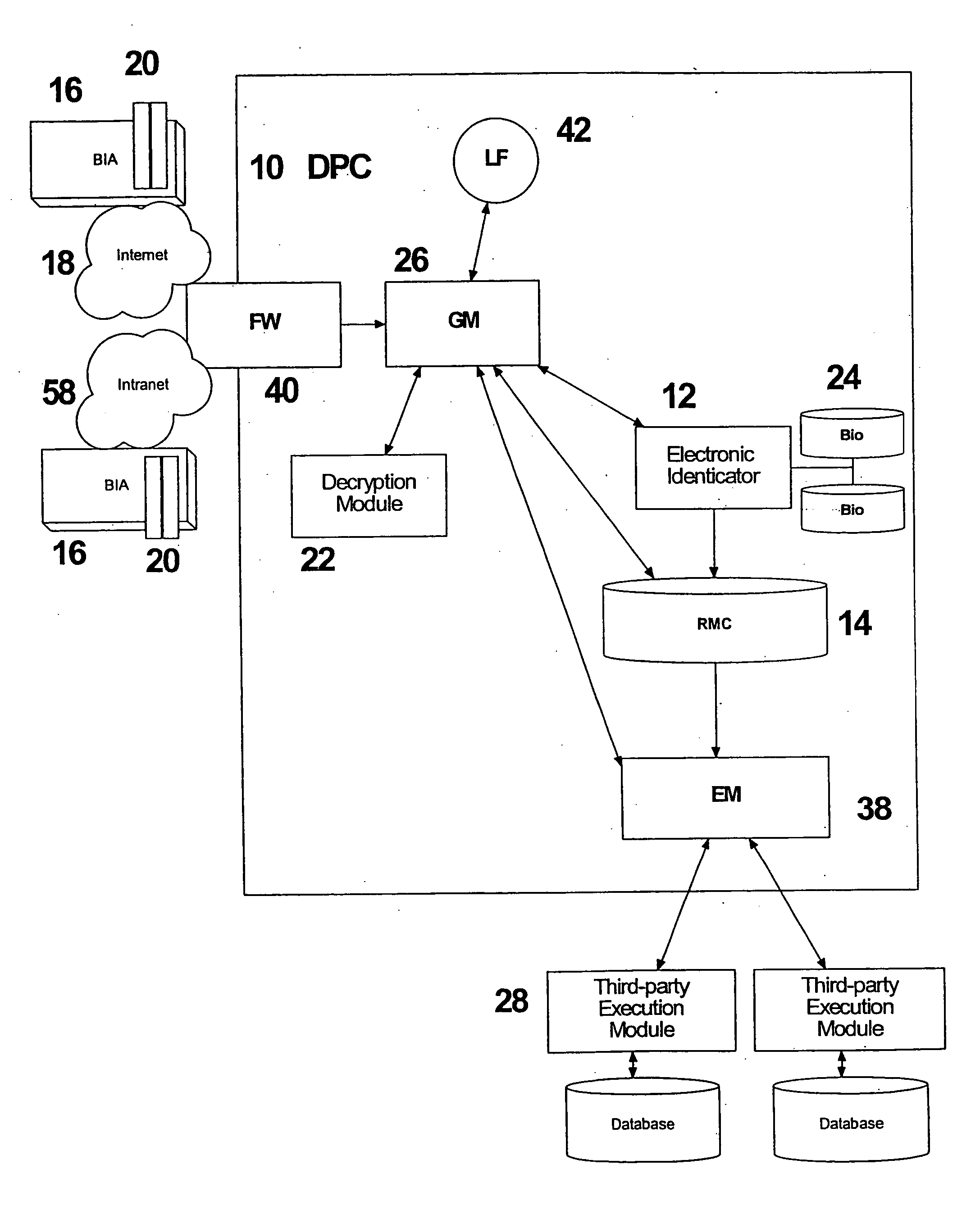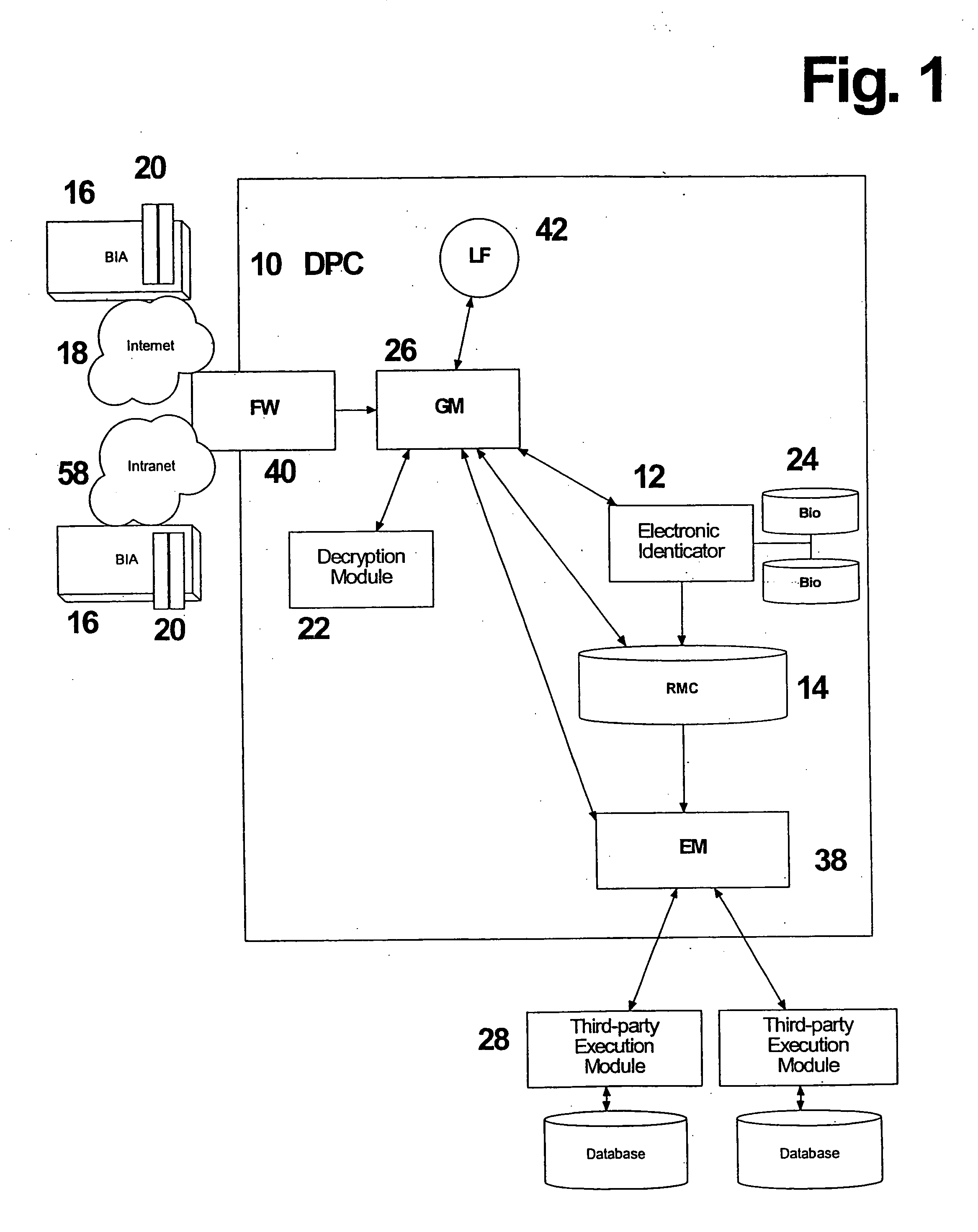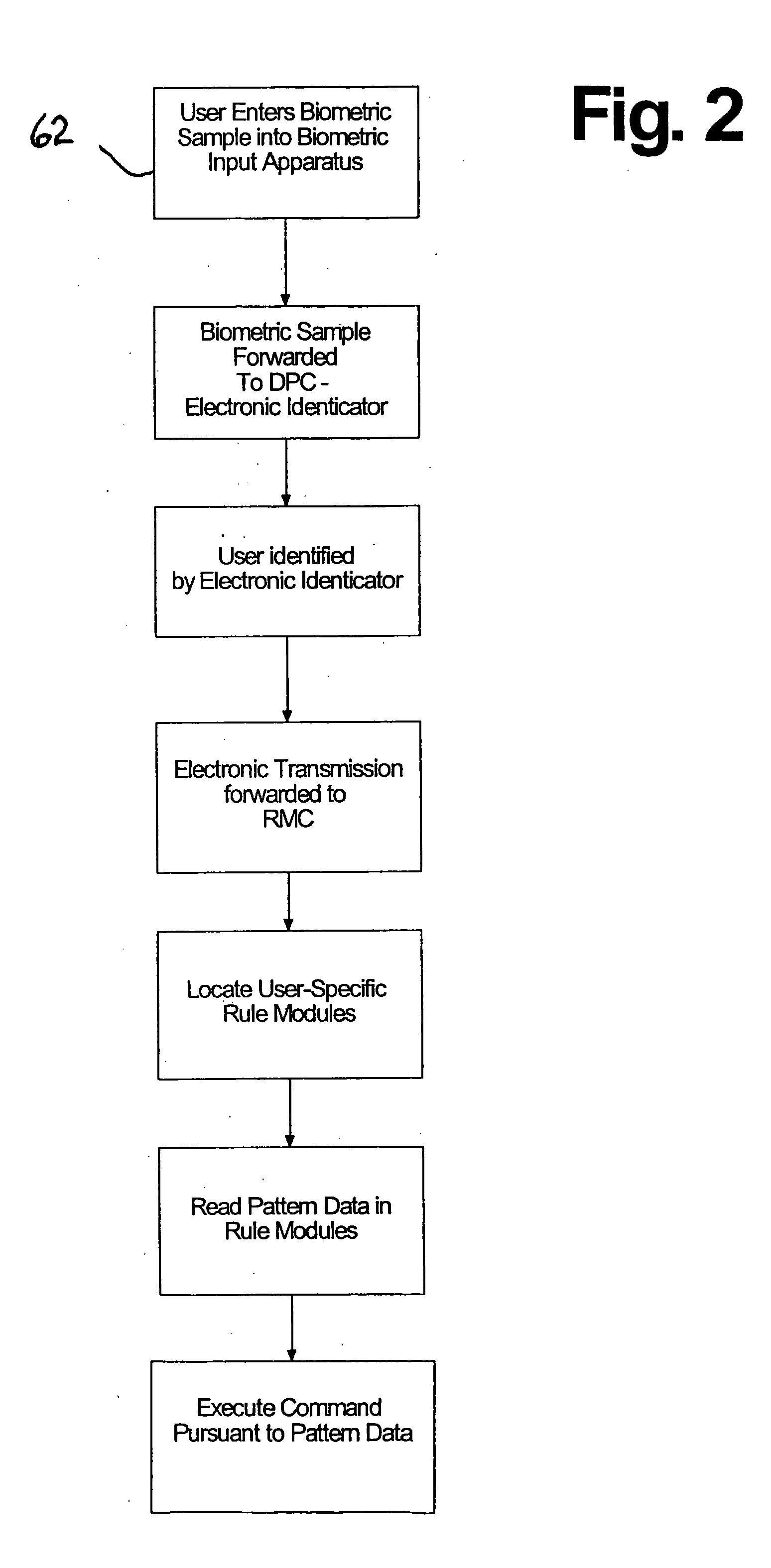System and method for processing tokenless biometric electronic transmissions using an electronic rule module clearinghouse
a technology of electronic transmission and electronic rule, applied in the field of tokenless biometric computer systems, can solve the problems of cumbersome burden, severe blow to consumers, loss or damage of primary personal computing tokens, etc., and achieve the effects of reducing cumbersome burden, reducing fraud, and increasing economic savings
- Summary
- Abstract
- Description
- Claims
- Application Information
AI Technical Summary
Benefits of technology
Problems solved by technology
Method used
Image
Examples
Embodiment Construction
[0069] The invention provides a tokenless biometric method and system for authorizing and executing electronic transmissions using a data processing center (DPC) 10, that has an Electronic Identicator (Identicator) 12 and an electronic Rule Module Clearinghouse (Clearinghouse) 14. The user forwards their biometric samples to the data processing center via biometric input apparatus (BIA) 16. Electronic transmissions of data, including the transmission of the biometric samples from the BIA to the DPC optionally occurs over an intranet 58, extranet or the Internet 18, whether using a local area network (LAN) or wide area network (WAN). It is the essence of this invention that the user not present any man-made personalized tokens during an identification process in order for an electronic transmission to be authorized. Such tokens include smart cards, magnetic swipe cards, or personal computers with resident user-customized data.
[0070] Tokenless biometric electronic transmissions are c...
PUM
| Property | Measurement | Unit |
|---|---|---|
| time | aaaaa | aaaaa |
| temperature | aaaaa | aaaaa |
| resistance | aaaaa | aaaaa |
Abstract
Description
Claims
Application Information
 Login to View More
Login to View More - R&D
- Intellectual Property
- Life Sciences
- Materials
- Tech Scout
- Unparalleled Data Quality
- Higher Quality Content
- 60% Fewer Hallucinations
Browse by: Latest US Patents, China's latest patents, Technical Efficacy Thesaurus, Application Domain, Technology Topic, Popular Technical Reports.
© 2025 PatSnap. All rights reserved.Legal|Privacy policy|Modern Slavery Act Transparency Statement|Sitemap|About US| Contact US: help@patsnap.com



